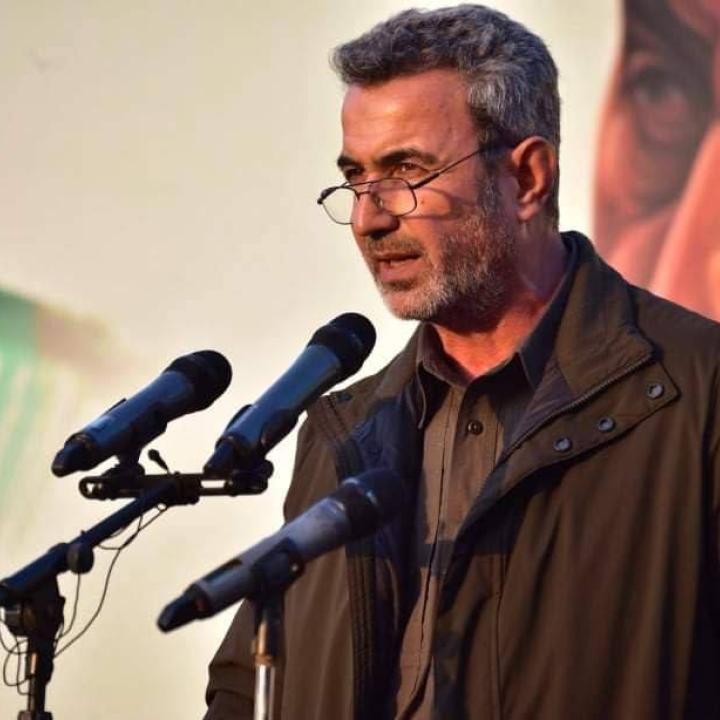

Recent moves by the senior PMF commander are seemingly aimed at sowing divisions among four key militias that do not answer to the so-called "resistance."
On January 10, Sabereen News and a few other muqawama (resistance) social media accounts posted a clip showing fighters gathering in an empty space in the city of Karbala and lining up to receive a few items. The footage identified the fighters as members of al-Abbas Combat Division (Firqat al-Abbas al-Qitaliyah, or FAQ), a unit affiliated with Grand Ayatollah Ali al-Sistani and forming the 26th Brigade of Iraq's Popular Mobilization Forces (PMF). Sabereen’s post read: “[Members] of group C of the mujahedin join [their] duty, demanding their rights [which were] usurped by Maytham al-Zaidi, Brigade (26) of the [PMF]. They continue their strike until their demand to dismiss al-Zaidi is met” (Figure 1).
The fighters in this breakaway contingent are also shown listening to remarks by Abu Ali al-Ashtar, the brigade’s former intelligence chief who mounted a challenge against FAQ leader Zaidi on December 13 (Figure 2). Ashtar accused Zaidi of stealing salaries from fighters; Zaidi has denied the accusations and stated that all the accounts are transparent.
Far from seeking actual financial transparency, however, the Sabereen video seems more like an effort to dismantle the Atabat, the four "shrine units" that have long refused to kowtow to the orders of the Iran-backed muqawama militias that dominate the PMF. By targeting these units, Kataib Hezbollah (KH) commander Abu Fadak seeks to consolidate his power and make sure that all PMF brigades answer to him.
The day the strike started, Ashtar addressed the PMF Commission and its chief of staff, Abu Fadak, in a video widely circulated on muqawama social media. In it, he demanded that Zaidi be dismissed.
This is an old strategy that Iran-backed militias have previously used to undermine any PMF brigade elements not aligned with Tehran. In 2016, Abu Fadak's predecessor, the late Abu Mahdi al-Muhandis, supported a rebellion inside the Atabat unit Firqat al-Imam Ali al-Qitaliyah, a move that prompted the brigade's secretary-general to demand that Muhandis be dismissed. Muhandis had made sure to cut the salaries of any brigade members who refused to defect, prompting unit leader Abbas Abu Tbeekh to accuse him of “usurpation.”
In the current strike, Abu Fadak and muqawama militias such as KH and Asaib Ahl al-Haq (AAH) have supported the breakaway faction. The space where the defectors continue to protest is protected and allocated by the PMF. The shipping containers in the video—which are being used illegally as PMF offices—were also provided by Abu Fadak and supporting militias. A sign on one of the containers reads "Hamlt Ikhwat Zainab" (Zainab’s brothers’ campaign) (Figure 3). Ikhwat Zainab is a name that AAH fighters often call themselves due to their role in protecting the shrine of Imam Hussein’s sister, Zainab, in Syria.
Thus far, the strike has not gained traction in Iraqi mainstream media. Yet muqawama social media accounts are reporting heavily on the issue as a way of supporting the breakaway contingent and encouraging further dissension.







